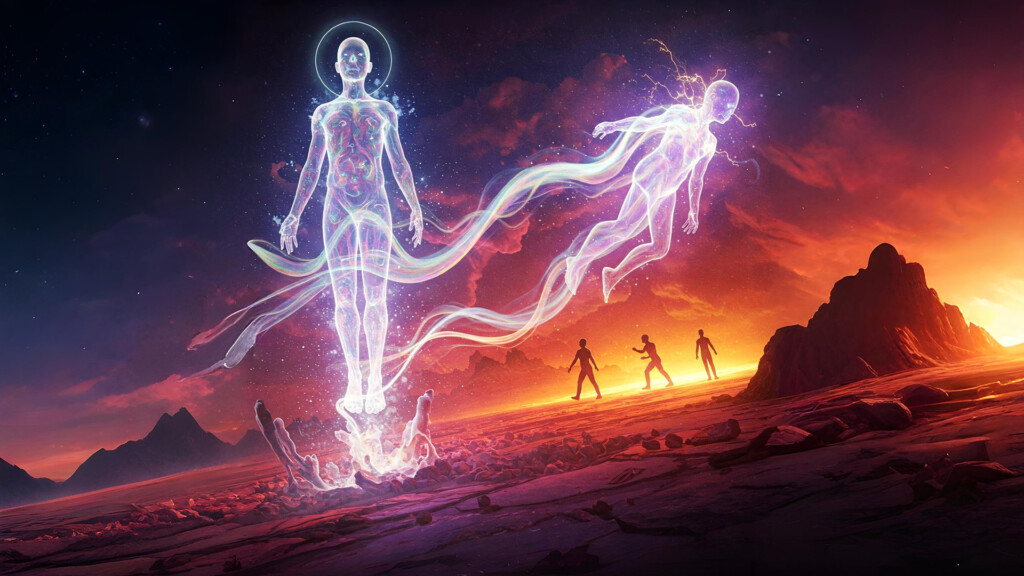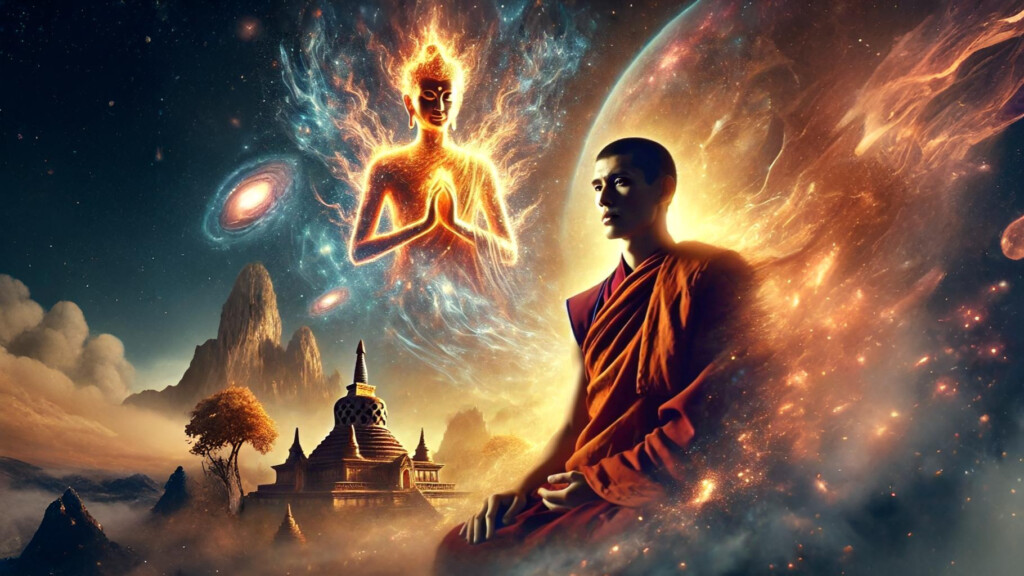In the mystical world of spirituality, the concept of soul transference might conjure up images of extraordinary Tibetan monks or enigmatic gurus who can leave their physical bodies and travel across invisible realms. But does Buddhism truly recognize this ability?

What is Soul Transference?
Simply put, soul transference is the ability to move one’s consciousness or spirit out of the body to another place, another physical form, or even another realm. This may include:
- Astral Projection: The soul leaves the physical body and wanders through space.
- Possession or Walk-In Phenomenon: One soul exits a body and enters another.
- Consciousness Transference (Phowa – Bardo Thödol): The soul departs at death and reincarnates in a new realm.
These ideas appear in many mystical traditions, but Buddhism offers a unique interpretation. However, science has also studied similar phenomena:
🔬 Olaf Blanke’s Experiment (2002): When electrically stimulating the temporal lobe of the brain, many participants felt as if they had left their bodies. This suggests that out-of-body experiences might be illusions created by the brain.
🔬 The AWARE Project (2014) by Sam Parnia: A study of over 2,000 cardiac arrest patients found that 9% of survivors reported experiencing an out-of-body perspective, seeing themselves from above. However, this phenomenon might be explained by how the brain processes information under oxygen deprivation.
So, are these experiences truly spiritual occurrences, or are they merely products of human neurology?
Buddhist Perspectives on Soul Transference
In Buddhism, the concept of an unchanging soul (as seen in theistic religions) does not exist. Instead, Buddhism speaks of consciousness (viññāṇa) or karmic energy, which is an ever-changing, non-fixed stream rather than a permanent “self” that can transfer.

However, Buddhism does have concepts somewhat similar to soul transference:
🔥 Phowa – The Art of Consciousness Transference
Phowa (འཕོ་བ་) is a practice in Vajrayana Buddhism, particularly Tibetan Buddhism, in which a practitioner can deliberately leave their body at the time of death and reincarnate in a higher realm. It is believed that highly realized lamas can control this process and even choose their next rebirth—leading to the Tulku System, where reincarnated masters, such as the Dalai Lama, are recognized.
📜 Ian Stevenson and Past Life Memories
Stories of lamas recalling past lives bring to mind the research of Ian Stevenson, who collected over 3,000 cases of children remembering past lives. Some notable cases include:
- Shanti Devi (India, 1930s): A 4-year-old girl remembered a past life as a deceased woman, accurately describing her former husband, house, and habits.
- Ryan Hammons (USA): A boy recalled being a Hollywood actor from the 1930s. Upon investigation, the details matched the life of Marty Martyn, an obscure actor.
These studies raise the question: Can consciousness truly move between lifetimes?
Is Soul Transference Real?
From a Buddhist philosophical standpoint, there is no fixed soul that can “transfer,” only a stream of karmic consciousness—a continuous cycle of cause and effect rather than a permanent entity jumping from one place to another.
However, many people report strange phenomena such as:
👁 Bardo Thödol – The Intermediate State
In the Tibetan Book of the Dead (Bardo Thödol), it is believed that after death, consciousness does not immediately reincarnate but instead passes through an intermediate state (bardo). In this phase, if one has the ability, they can transfer their consciousness into another body or form of existence.
🔬 Henrik Ehrsson’s Experiment (2007)
Using virtual reality (VR), scientists created an illusion of out-of-body experiences. When participants saw their “body” being touched in VR, they reacted as if their real bodies were affected—proving that the brain can be tricked into feeling “disembodied.”
💀 Near-Death Experiences (NDEs)
The AWARE project found that many near-death patients felt they had left their bodies and seen a tunnel of light. However, science suggests these experiences might be hallucinations caused by oxygen deprivation or the release of dopamine in the brain.
Such experiences make people wonder if there is something beyond our ordinary understanding of consciousness. Some cases even mention the bizarre phenomenon of bilocation—where a person is seen in two places at once, further complicating the mystery of consciousness.
Mystical Power or a Different Perspective on Consciousness?
Buddhism does not deny the experiences that people call “soul transference,” but its explanation is quite different. There is no eternal soul that moves, only a continuous process of karmic causation. What we perceive as “transference” is merely the expression of this endless cycle—nothing supernatural, just the natural flow of cause and effect.
But whether science can prove or disprove these phenomena, one thing remains certain: the mysteries of human consciousness are far from fully understood. And that is why, whether myth or truth, stories of the soul will continue to captivate us for generations to come. 🚀
